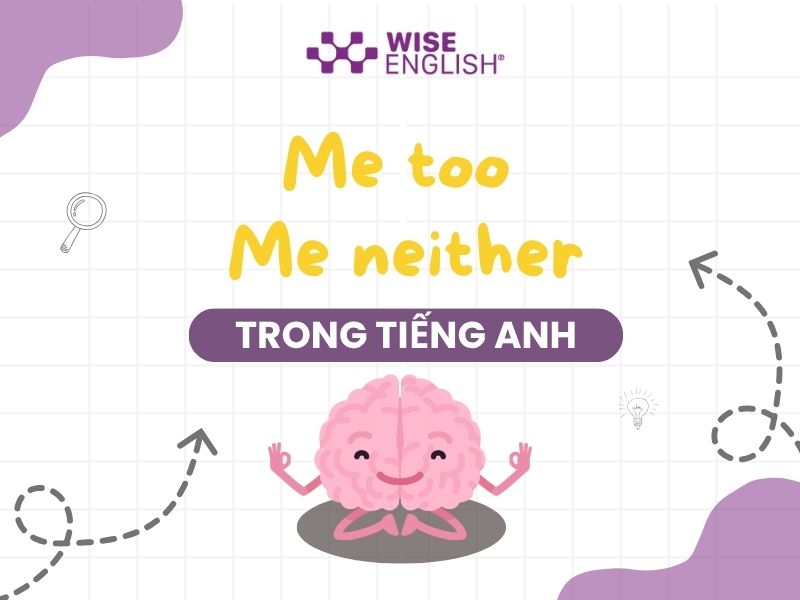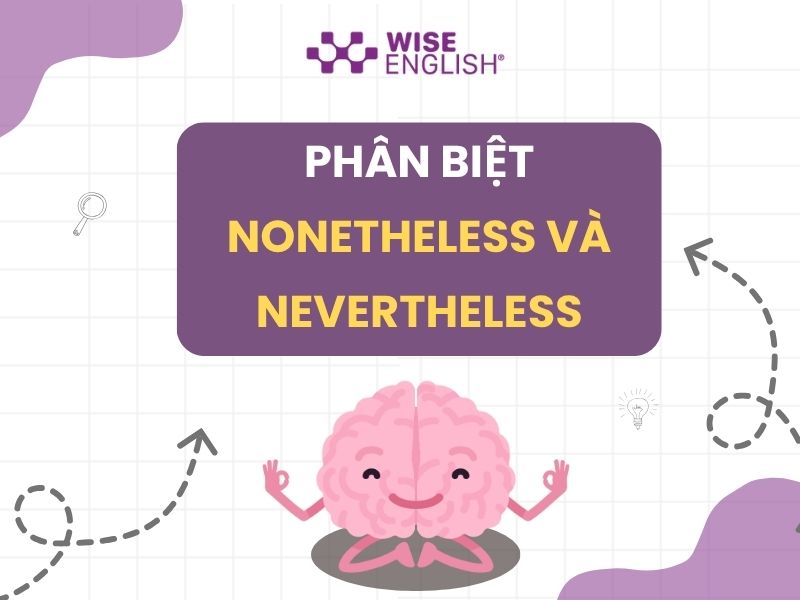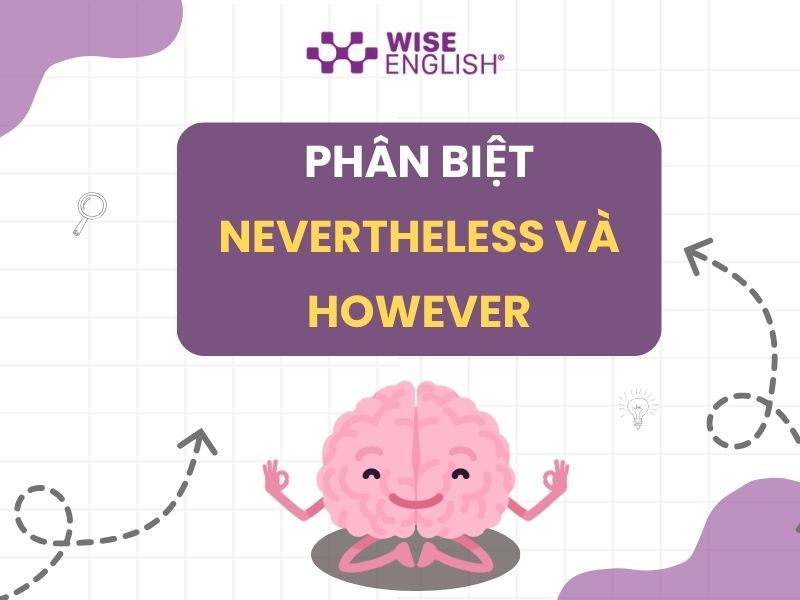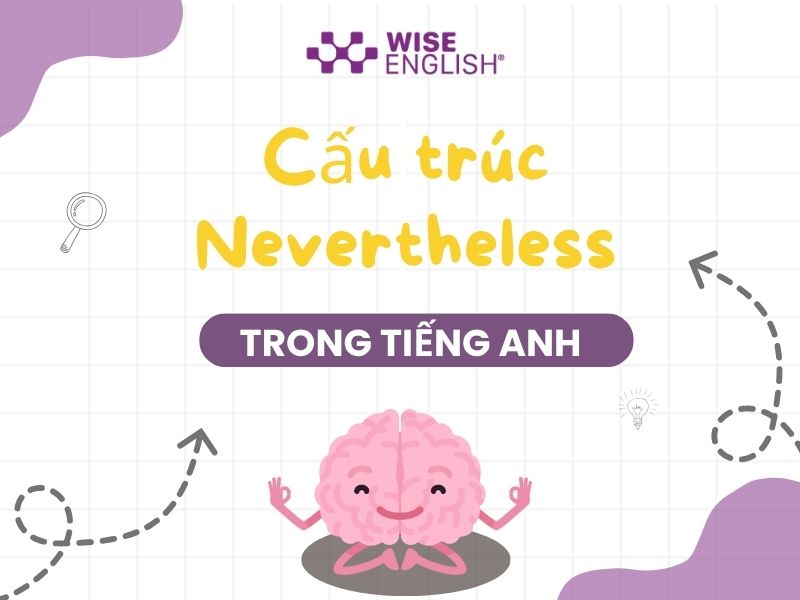Dạng bài Discussion là một trong số những dạng đề khá phổ biến trong phần thi IELTS Writing Task 2. Dạng bài này đòi hỏi thí sinh phải trình bày về cả hai mặt của vấn đề nào đó, thay vì đưa ra hoặc thể hiện ý kiến một chiều.
Vậy làm sao để có thể hoàn thành thật tốt bài thi IELTS Writing Task 2 dạng Discussion Essay? Tham khảo ngay bài viết dưới đây của trung tâm tiếng Anh WISE ENGLISH để có thể ôn luyện thi Writing thật đúng cách nhé!
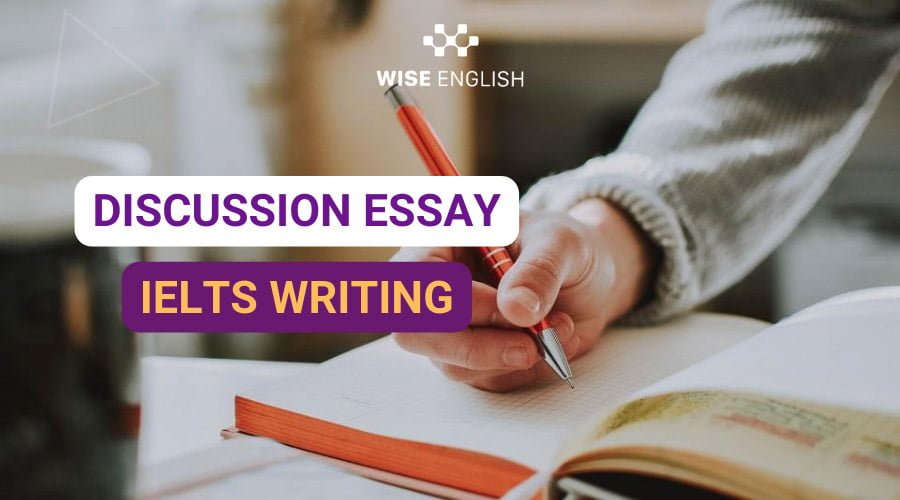
I. Tổng quan về chủ đề trong bài thi IELTS Writing task 2
Khác với Task 1 (Academic), Task 2 phần thi Writing sẽ yêu cầu thí sinh đưa ra ý kiến và thảo luận về những vấn đề xã hội hoặc các vấn đề cá nhân thường gặp trong cuộc sống. Trong Task 2, bạn có thể gặp các dạng đề sau đây:
- Dạng bài Argumentative/Agree or Disagree Essay (Opinion essay)
- Dạng bài Advantages and Disadvantages Essay
- Dạng bài Causes and Effects/Causes and Solutions/Problems and Solutions Essay
- Dạng bài Two-Part Question Essay
Yêu cầu chung đối với phần thi IELTS Writing Task 2
Bài Discussions Essay của bạn nên có độ dài tối thiểu là 250 chữ. Đối với phần này, bạn sẽ phải viết một bài luận để trình bày ý kiến cá nhân, đánh giá các điểm mạnh/ điểm yếu, nêu ra vấn đề, phương án giải quyết… cho những nội dung cụ thể.
Task 2 yêu cầu thí sinh phải thể hiện được:
-
- Kỹ năng trình bày các thông tin cơ bản và thực tế từ đề bài.
- Kỹ năng phân tích, phán đoán vấn đề từ đó đưa ra các phương án giải quyết.
- Kỹ năng diễn đạt để triển khai các lập luận một cách mạch lạc và logic.
II. Tổng quan về dạng đề Discussion Essay trong phần thi Writing Task 2
1. Dạng đề Discussion Essay là gì?
Discussion Essay là một trong những dạng bài phổ biến trong phần IELTS Writing Task 2, yêu cầu thí sinh phân tích hai quan điểm hoặc lập luận đối lập nhau xoay quanh một chủ đề xã hội, giáo dục, công nghệ, môi trường… hoặc bất kỳ lĩnh vực nào có tính tranh luận. Thí sinh phải trình bày đầy đủ cả hai mặt của vấn đề, nêu rõ ý kiến cá nhân và lập luận thuyết phục để bảo vệ quan điểm đó.
Thông thường, đề bài sẽ có cấu trúc như sau:
“Discuss both views and give your own opinion.”
“Some people believe that… Others think that… Discuss both views and give your opinion.”
Dạng bài này không chỉ kiểm tra vốn từ vựng học thuật và ngữ pháp mà còn đánh giá khả năng phân tích logic, lập luận cân bằng và tổ chức bài viết mạch lạc của thí sinh.
2. Cách nhận biết dạng đề discussion essay
Ví dụ chúng ta có đề bài sau:

Phân tích:
Không chỉ riêng đối với discussion essay, hầu hết các đề bài IELTS Writing task 2 luôn chia thành 2 phần:
- Phần background: (Hầu như giống nhau ở các đề bài) nêu lên nội dung sẽ discuss.
- Phần yêu cầu: (Khác nhau theo từng loại essay – đây là dấu hiệu nhận biết chính) yêu cầu chính của đề bài – phần in đậm nghiêng và có gạch dưới.
Theo đó nếu yêu cầu đề bài là:
- Discuss both these views…
- Discuss both views…
- Discuss both sides…
Thì đó chắc chắn là yêu cầu của một bài discussions essay.
III. Cách lên ý tưởng cho bài viết Discussion Essay (Brainstorming ideas)
1. Brainstorming
Đây là giai đoạn bạn cần phân tích câu hỏi và nhanh chóng ghi lại càng nhiều ý tưởng liên quan trong đầu bạn càng tốt.
Hạn chế của phương pháp này là bạn có thể có rất nhiều ý tưởng nhưng không đủ thời gian để sắp xếp chúng và chọn ra những ý tưởng phù hợp nhất trước khi bắt đầu viết.
2. Mind-mapping
Sơ đồ tư duy sẽ hỗ trợ bạn sắp xếp suy nghĩ bằng cách liên kết đến từng phần với một phần cụ thể của câu hỏi.
Bạn vẫn có thể gặp vấn đề về việc “quá tải” ý tưởng nhưng sau khi sử dụng phương pháp này, nhiều sinh viên đã thành công, đặc biệt là những người đã có kinh nghiệm tạo bản đồ tư duy.
3. Friends Technique
Phương pháp này cho phép bạn lùi một bước để thoát khỏi sự căng thẳng trong khi thi và có thể suy nghĩ bình tĩnh hơn.
Sau đây là cách nó hoạt động: Hãy tưởng tượng bạn đang trò chuyện với một người bạn và họ hỏi bạn một câu hỏi ngẫu nhiên. Liệu bạn sẽ đưa ra câu trả lời nào trong tình huống này? Hãy lập dàn ý bài luận của bạn xung quanh những ý tưởng đó. Thực hiện điều này sẽ giúp bạn đưa ra những câu trả lời đơn giản bằng ngôn ngữ hàng ngày thay vì căng thẳng để nghĩ ra những ý tưởng sử dụng ngôn ngữ cấp cao, điều này không thực sự cần thiết.
4. Example method
Đây là một phương pháp giúp bạn tạo ra các ý tưởng để hỗ trợ các luận điểm chính trong bài IELTS Writing vì các giám khảo sẽ có xu hướng thích các ví dụ có liên quan tới chủ đề.
Tất cả những gì bạn cần làm là suy nghĩ về các ví dụ cụ thể liên quan đến câu hỏi. Chúng có thể đến từ trải nghiệm của bản thân bạn hoặc là thứ bạn đã từng đọc, nghe về nó. Với phương pháp này, bạn nên thường xuyên đọc báo, tạp chí và các trang web chuyên đề như là một phần của việc luyện thi để có thể sử dụng chúng làm ví dụ.
Bạn thậm chí có thể tự tạo ra các ví dụ hoặc điều chỉnh các ví dụ thực tế để phù hợp hơn với câu hỏi. Giám khảo sẽ không kiểm tra tính xác thực trong ví dụ của bạn, nhưng tất nhiên chúng phải có lý.
Một khi suy nghĩ về ví dụ, các ý tưởng để đưa vào bài luận sẽ dễ dàng đến với bạn.
Dưới đây là một số ý tưởng dành cho đề bài mẫu đã nêu ở trên được liệt kê ra theo phương pháp Friends Technique

Sau khi liệt kê các ý tưởng, bạn cần phải lựa chọn những cái thích hợp nhất để phát triển thành một đoạn văn đầy đủ cho bài essay của mình. Ngoài ra, bạn có thể tham khảoTips thi IELTS Writing để hoàn thành bài thi thật xuất sắc.
IV. Cấu trúc phổ biến của dạng đề Discussion Essay




Tải file word tại đây: Ví dụ cấu trúc phổ biến của dạng đề Discussion Essay
Dành riêng cho bạn: Tổng hợp toàn bộ tài liệu Luyện thi IELTS Writing
V. Ví dụ dạng đề Discussion Essay
1. Bài mẫu chủ đề: Technology
Đề bài: Some people believe that technology has made our lives more convenient, while others argue that it has created more problems. Discuss both views and give your own opinion.
Bài mẫu:
In the modern era, technology has become an integral part of our daily lives, significantly impacting various aspects of society. While some individuals assert that technology has brought convenience and improved our lives, others argue that it has resulted in several challenges. This essay will discuss both perspectives and provide my own opinion on the matter.
On the one hand, proponents of technology argue that it has undeniably made our lives more convenient. Technological advancements have revolutionized communication, making it easier and faster to connect with others across the globe. Through platforms like social media, people can effortlessly stay in touch with friends and family, share their thoughts, and access information instantaneously. Moreover, technology has streamlined several tasks, such as online shopping, banking, and transportation, saving time and effort for individuals. For instance, online shopping allows people to browse and purchase items from the comfort of their homes, eliminating the need to visit physical stores. These conveniences have undoubtedly enhanced our quality of life.
On the other hand, critics argue that technology has created a host of problems in society. One concern is the overreliance on technology, leading to a sedentary lifestyle and reduced physical activity. With the advent of smartphones and entertainment devices, people are spending more time indoors, resulting in health issues such as obesity and related ailments. Additionally, technology has led to the erosion of privacy, with personal information being vulnerable to cyber-attacks and data breaches. The prevalence of social media has also given rise to online harassment and cyberbullying, causing psychological distress among individuals, particularly the younger generation. Furthermore, the rapid pace of technological advancements has led to job displacement and increased economic inequality, as automation replaces human labor in various industries.
In my opinion, while technology has undoubtedly brought convenience and improved certain aspects of our lives, it has also presented significant challenges. It is crucial to strike a balance between embracing technological advancements and mitigating the adverse effects they can have on society. This can be achieved through education and awareness programs that promote responsible use of technology, emphasizing the importance of physical activity, digital privacy, and online safety. Additionally, governments and regulatory bodies should establish robust policies and regulations to safeguard individuals’ rights and ensure ethical practices in the technological sphere.
In conclusion, technology has both positive and negative impacts on our lives. While it has undoubtedly brought convenience and improved communication, it has also posed challenges such as sedentary lifestyles, privacy concerns, and job displacement. Striking a balance and implementing measures to mitigate the negative effects of technology are essential to harness its benefits while safeguarding the well-being of individuals and society as a whole.
2. Bài mẫu chủ đề: Transportation
Đề bài: Some people believe that the government should invest more in public transportation to reduce traffic congestion and pollution. Others argue that individuals should take more responsibility for their transportation choices. Discuss both views and give your own opinion.
Bài mẫu:
Traffic congestion and pollution have become major issues in many cities around the world. Some individuals advocate for increased government investment in public transportation as a solution, while others argue that individuals should take more responsibility for their transportation choices. This essay will examine both perspectives and provide my own opinion on the matter.
On one hand, proponents of increased government investment in public transportation argue that it is an effective way to reduce traffic congestion and pollution. By improving and expanding public transportation systems, governments can provide viable alternatives to private vehicles, thereby encouraging people to leave their cars at home. This would lead to fewer cars on the road, alleviating traffic congestion and reducing carbon emissions. Furthermore, a well-developed public transportation system can make commuting more efficient and convenient for individuals, incentivizing them to choose public transportation over private vehicles.
On the other hand, those who advocate for individual responsibility argue that people should be encouraged to make sustainable transportation choices on their own. They argue that individuals should be more conscious of the environmental impact of their transportation decisions and take steps to reduce their own carbon footprint. This can be achieved through initiatives such as carpooling, cycling, and walking. By promoting these sustainable transportation options and raising awareness about their benefits, individuals can actively contribute to reducing traffic congestion and pollution. Moreover, they argue that personal responsibility fosters a sense of accountability and empowers individuals to make environmentally conscious choices.
In my opinion, a combination of both approaches is necessary to address the issue effectively. While increased government investment in public transportation is crucial, it should be complemented by efforts to promote individual responsibility. Governments should prioritize the development and improvement of public transportation infrastructure, making it a more appealing and efficient option for the public. This can include measures such as expanding public transit networks, enhancing the frequency and reliability of services, and providing incentives such as discounted fares. Additionally, public awareness campaigns and education programs should be implemented to encourage individuals to make sustainable transportation choices and understand the environmental impact of their actions.
In conclusion, the issue of traffic congestion and pollution requires a multifaceted approach. While increased government investment in public transportation can significantly contribute to addressing these issues, individuals should also take responsibility for their transportation choices. By combining efforts to improve public transportation and promote sustainable options, we can effectively reduce traffic congestion, minimize pollution, and create more sustainable and livable cities for future generations.
3. Bài mẫu chủ đề: Technology
Đề bài: Some people believe that technology is making people’s lives easier, while others argue that it is making people more isolated and less sociable. Discuss both views and give your own opinion.
Bài mẫu:
Technology has become an integral part of our modern society, impacting various aspects of our lives. While some individuals argue that technology is making people’s lives easier, others contend that it is causing increased isolation and reduced sociability. This essay will examine both perspectives and provide my own opinion on the matter.
On one hand, proponents of technology argue that it is making people’s lives easier and more convenient. Technological advancements have streamlined several tasks, saving time and effort for individuals. For example, the internet has provided access to a vast amount of information at our fingertips, facilitating research and learning. Communication has also been greatly enhanced through technological innovations such as smartphones and social media platforms, allowing people to stay connected with friends and family regardless of distance. Furthermore, the rise of automation and smart devices has made everyday activities more efficient, from automated home systems to voice-controlled assistants.
On the other hand, critics argue that technology is leading to increased isolation and reduced sociability. The prevalence of digital communication has diminished face-to-face interactions, making people more reliant on virtual interactions rather than genuine human connections. Social media platforms, while providing a means of staying connected, often promote superficial interactions and contribute to feelings of loneliness and isolation. Additionally, excessive screen time and the constant presence of technology can lead to a lack of social skills and decreased ability to engage in meaningful interpersonal relationships.
In my opinion, technology can both make people’s lives easier and contribute to isolation, depending on how it is used. It is essential to find a balance between utilizing technology for its benefits while maintaining genuine human connections. Technology should be seen as a tool that enhances our lives, rather than a substitute for human interaction. It is crucial to be mindful of our screen time and prioritize face-to-face interactions. Additionally, fostering digital literacy and promoting responsible use of technology can help individuals navigate the digital world more effectively.
In conclusion, technology has undoubtedly made our lives easier and more convenient in many ways. However, it also poses challenges in terms of isolation and reduced sociability. Striking a balance between utilizing technology for its benefits and maintaining genuine human connections is key. By being mindful of our technology usage and prioritizing face-to-face interactions, we can harness the advantages of technology while preserving our sociability and well-being.
4. Bài mẫu chủ đề: Crime
Đề bài: Some people argue that harsher punishments are the most effective way to reduce crime rates, while others believe that addressing underlying social issues is more important. Discuss both views and give your own opinion.
Bài mẫu:
The issue of crime rates and the most effective measures to address them has been a topic of debate for many years. While some individuals advocate for harsher punishments as a deterrent, others argue that addressing underlying social issues is crucial. This essay will discuss both perspectives and provide my own opinion on the matter.
On one hand, proponents of harsher punishments argue that they serve as an effective deterrent against crime. They believe that stricter penalties, such as longer prison sentences or even capital punishment, can instill fear in potential offenders and deter them from committing crimes. The argument is that the threat of severe consequences will make individuals think twice before engaging in criminal activities. Additionally, proponents argue that harsher punishments can provide a sense of justice to the victims and society as a whole.
On the other hand, critics contend that addressing underlying social issues is of utmost importance in reducing crime rates. They argue that crime is often a result of various factors, such as poverty, unemployment, lack of education, and social inequality. By tackling these root causes, societies can create an environment that is less conducive to criminal behavior. This can be achieved through initiatives that focus on poverty alleviation, providing quality education and job opportunities, and promoting social integration and equal opportunities for all members of society. Critics believe that by addressing these underlying issues, individuals are less likely to resort to criminal activities as a means of survival or rebellion.
In my opinion, both approaches are necessary to effectively reduce crime rates. While harsher punishments may serve as a deterrent in some cases, they are not a comprehensive solution. Addressing underlying social issues is crucial for long-term crime prevention. Harsher punishments alone do not address the root causes of crime and may even exacerbate the problem by perpetuating a cycle of crime and punishment.
A holistic approach that combines strict penalties with efforts to address social issues is more likely to yield positive results. Governments should invest in education, social welfare programs, and initiatives that promote equal opportunities. By focusing on prevention rather than solely punishment, societies can create an environment that discourages criminal behavior and offers individuals a chance to escape the circumstances that may lead to crime.
In conclusion, reducing crime rates requires a comprehensive approach that takes into account both punishment and addressing underlying social issues. While harsher punishments may serve as a deterrent, addressing poverty, unemployment, and inequality is crucial for long-term crime prevention. By combining these approaches, societies can create safer and more inclusive communities for all members.
VI. Các lỗi sai thường gặp khi làm dạng Discussion Essay
Dạng bài Discussion Essay trong IELTS Writing Task 2 đòi hỏi thí sinh không chỉ phân tích được hai quan điểm trái chiều, mà còn phải thể hiện ý kiến cá nhân một cách rõ ràng, logic và mạch lạc. Tuy nhiên, nhiều thí sinh vẫn mắc phải những lỗi phổ biến khiến bài viết bị trừ điểm đáng tiếc. Dưới đây là những sai lầm thường gặp và cách khắc phục hiệu quả.
1. Chỉ phân tích một quan điểm
Một trong những lỗi nghiêm trọng nhất là chỉ trình bày một quan điểm thay vì cả hai như yêu cầu của đề bài. Với dạng Discussion Essay, bạn bắt buộc phải thảo luận cân bằng cả hai lập luận được đưa ra, sau đó mới đưa ra ý kiến cá nhân. Thiếu một phía đồng nghĩa với việc bạn không hoàn thành nhiệm vụ của đề, và sẽ bị đánh giá thấp ở tiêu chí Task Response.
2. Không đưa ra ý kiến rõ ràng
Dù yêu cầu là thảo luận cả hai quan điểm, đề bài luôn kèm theo yêu cầu “Give your own opinion”. Nhiều thí sinh trình bày hai bên rất tốt nhưng lại không nêu rõ quan điểm cá nhân, hoặc chỉ nhắc sơ sài ở phần kết. Điều này khiến bài viết thiếu tính định hướng và không đủ độ sâu. Lời khuyên là hãy đưa ra ý kiến của bạn ngay từ phần mở bài, nhấn mạnh lại trong thân bài và khẳng định lại một lần nữa ở kết luận.
3. Phân tích thiếu chiều sâu, luận điểm mơ hồ
Một lỗi thường thấy là diễn đạt ý quá chung chung, thiếu ví dụ, dẫn chứng và phân tích cụ thể. Việc này khiến bài viết không đủ tính thuyết phục, dù bạn đã trình bày đủ hai quan điểm. Mỗi đoạn thân bài nên có một luận điểm chính, được hỗ trợ bằng lý do cụ thể và ví dụ rõ ràng, có thể từ thực tế, xã hội, hoặc kinh nghiệm cá nhân (nếu phù hợp).
4. Dùng sai cấu trúc bài Discussion Essay
Nhiều thí sinh không phân chia rõ ràng bố cục bài viết, dẫn đến phần thân bài bị rối hoặc lặp ý. Một bài Discussion Essay chuẩn thường có:
- Mở bài: giới thiệu chủ đề và nêu quan điểm cá nhân
- Thân bài 1: phân tích quan điểm A
- Thân bài 2: phân tích quan điểm B
- Thân bài 3 (nếu cần): nêu rõ quan điểm của bạn (nếu chưa đề cập trong 2 đoạn trên)
- Kết luận: tóm tắt lại và khẳng định quan điểm
Học viên nên luyện viết đúng cấu trúc ngay từ đầu để tạo thành thói quen và đảm bảo bài viết mạch lạc.
5. Thiếu từ vựng học thuật và liên kết logic
Việc sử dụng ngôn ngữ đơn điệu, từ vựng nghèo nàn và thiếu liên kết là lý do khiến nhiều bài Discussion Essay bị đánh giá thấp. Hãy học cách sử dụng các cụm từ chuyển ý như: On the one hand, On the other hand, From my perspective, It is widely believed that, However, Therefore,… để tăng tính học thuật và giúp bài viết trôi chảy hơn.
6. Không được sửa lỗi kịp thời, thiếu phản hồi từ chuyên gia
Tự học không sai, nhưng nếu không có người hướng dẫn, bạn rất dễ lặp lại lỗi cũ mà không nhận ra, đặc biệt là các lỗi về logic, tổ chức bài viết và diễn đạt. Vậy nên học IELTS ở đâu để được hỗ trợ chuyên sâu? Câu trả lời là hãy tìm đến những khóa học IELTS có chương trình luyện Writing bài bản, nơi bạn được chấm, chữa bài kỹ lưỡng và nhận feedback cụ thể từ giảng viên chuyên môn cao.
VII. Cùng WISE English chinh phục IELTS Writing band 6.5+
Đạt được IELTS Writing band 6.5+ là mục tiêu của rất nhiều thí sinh nhưng không phải ai cũng biết bắt đầu từ đâu và luyện như thế nào cho hiệu quả. Thực tế, Writing là kỹ năng khó cải thiện nhất trong kỳ thi IELTS nếu thiếu phương pháp phù hợp, chiến lược học rõ ràng và người hướng dẫn có chuyên môn. Vậy nếu bạn đang phân vân nên học IELTS ở đâu để cải thiện kỹ năng viết, thì WISE English chính là lựa chọn lý tưởng dành cho bạn.
Tại WISE English, học viên được tiếp cận với lộ trình học cá nhân hóa, xây dựng dựa trên năng lực đầu vào và mục tiêu đầu ra rõ ràng. Không còn học lan man, không còn viết sai rồi để đó, bạn sẽ được hướng dẫn cụ thể cách triển khai ý tưởng, tổ chức bài viết mạch lạc, và áp dụng từ vựng học thuật đúng ngữ cảnh. Khác với cách học theo mẫu văn rập khuôn, WISE áp dụng phương pháp độc quyền dựa trên Tư Duy Não Bộ (NLP) và Ngôn Ngữ Học (Linguistics), giúp học viên hiểu sâu bản chất từng dạng bài như Opinion Essay, Discussion Essay hay Problem-Solution Essay, từ đó tự tin xử lý mọi đề bài Writing Task 2.

Một điểm nổi bật trong khóa học IELTS tại WISE là đội ngũ giảng viên 8.0+ IELTS sẽ trực tiếp chấm chữa bài viết chi tiết, phân tích lỗi sai cụ thể từ cấu trúc câu, từ vựng cho đến cách phát triển luận điểm. Đây là yếu tố then chốt giúp học viên cải thiện từng ngày và bứt phá điểm số trong thời gian ngắn. Song song đó, WISE còn tổ chức các lớp bổ trợ cuối tuần hoàn toàn miễn phí, tạo điều kiện cho học viên luyện thêm, củng cố những điểm yếu và được hướng dẫn thêm ngoài giờ học chính.
Không chỉ tập trung vào kỹ năng, WISE còn có hệ thống theo dõi tiến độ cá nhân, kiểm tra định kỳ và đặc biệt là cam kết đầu ra rõ ràng, giúp bạn an tâm theo học và đạt đúng mục tiêu. Hàng ngàn học viên đã nâng band từ 5.0 lên 6.5–7.0+ sau một khóa, với kết quả thật và phản hồi tích cực từ chính người học.
Nếu bạn vẫn đang loay hoay tìm kiếm nơi luyện thi uy tín và hiệu quả, thì đừng chần chừ nữa. Đăng ký ngay khóa học IELTS tại WISE English để được đồng hành và chinh phục IELTS Writing band 6.5+ một cách bài bản, khoa học và bền vững.
Kết luận
Hy vọng bài viết này có thể giúp các bạn giải đáp được những thắc mắc liên quan đến cách viết và một số điều cần lưu ý về dạng bài Discussion Essay trong phần thi IELTS Writing Task 2.
📌 Bạn muốn trải nghiệm phương pháp luyện thi IELTS độc đáo và hiệu quả tại WISE English? Tham khảo ngay Trung tâm Luyện thi IELTS uy tín và hiệu quả
Để có kết quả thi tốt, bạn nên lập dàn ý chi tiết để sắp xếp thông tin bài viết một cách hiệu quả. Bên cạnh đó trau dồi thêm vốn từ nhằm sử dụng từ vựng và cấu trúc câu một cách linh hoạt và chính xác nhất. Chúc các bạn luyện thi hiệu quả và đạt được band điểm thật cao trong bài thi IELTS Writing Task 2.
Ngoài ra, đừng quên follow Fanpage, Group IELTS TIPS – Chiến lược IELTS 8.0+, kênh Youtube của WISE ENGLISH để trở thành người nhận được nhiều thông tin, tài liệu bổ ích và miễn phí sớm nhất giúp bạn NÂNG BAND THẦN TỐC và chinh phục các nấc thang của IELTS bằng những Phương Pháp Học Vượt Trội và Lộ Trình Cá Nhân Hóa nhé!
Tìm hiểu thêm:
Lộ trình học IELTS cho người mới bắt đầu từ 0 – 7.0+ trong vòng 150 buổi
10 Trung Tâm Luyện Thi IELTS Đà Nẵng tốt nhất bạn không thể bỏ qua.






